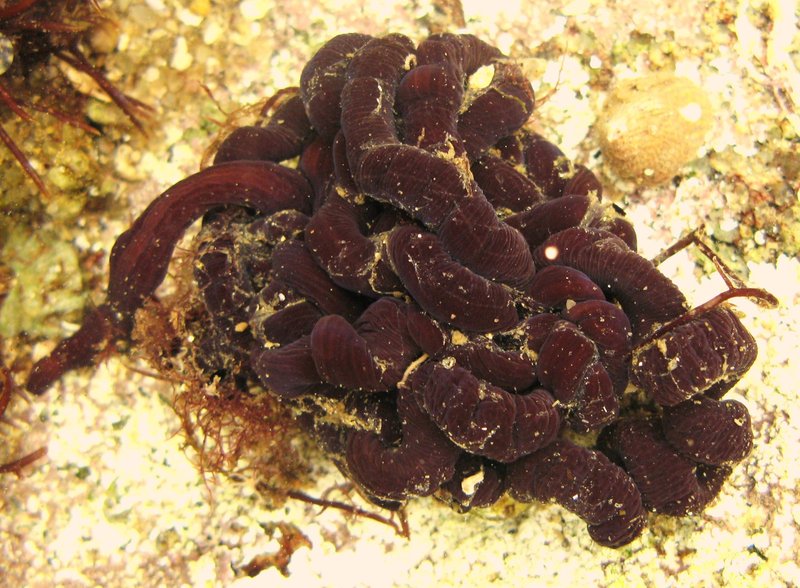
Here’s the thing: pollution isn’t just a big-city problem; it reaches into every corner of our environment, affecting creatures like bootlace worms in ways we might not immediately see. Just like how we might feel the effects of a cold or flu, these worms face their own challenges when contaminants seep into their habitats. Understanding how pollution impacts these curious creatures can help shed light on broader ecological health. So, let’s break it down and see what we can learn!
What Are Bootlace Worms?
Before diving into the effects of pollution, it’s worth exploring what bootlace worms actually are. These guys are fascinating for several reasons. First, they belong to a group called annelids, which includes earthworms and leeches. Bootlace worms are mostly found in the cold waters of the North Atlantic, often hiding in the sediment or swimming gracefully through the water.
These worms are known for their frilly appearance, which comes from their numerous lateral extensions called parapodia. These adaptations allow them to move freely in the water and also help them absorb oxygen. Surprisingly, bootlace worms are not just long; they can also regenerate if harmed, much like some types of lizards sprouting back their tails. So, while they may look delicate, they have some serious survival skills!
The Basics of Pollution
Pollution can come from a variety of sources—industrial waste, plastic, agricultural runoff, and even everyday household products. When these harmful substances enter the environment, they adversely affect not just visible wildlife but also the tiny organisms living beneath the surface. In water bodies, for example, pollutants like heavy metals, pesticides, and microplastics can settle on the ocean floor, creating a toxic environment.
When you think about how these pollutants affect larger animals, don’t forget about the smaller creatures like bootlace worms. These worms dwell in sediments, meaning they’re often among the first to encounter pollution. With heavy metals like mercury or lead seeping into their habitats, the implications can be severe.
How Pollution Impacts Bootlace Worms
Okay, so now that we know what these worms are and the basics of pollution, let’s talk about the real impacts. Bootlace worms are particularly sensitive to changes in their environment. Here’s why that’s important: when pollutants enter their habitat, they can suffer from issues like impaired growth, reproductive problems, and weakened immune systems. Imagine living in a contaminated home; you’d probably feel pretty awful, too!
The effects of pollution on bootlace worms can ripple through the ecosystem. These worms are a food source for many animals, so if they’re struggling, the impact can extend to fish and birds that rely on them for nourishment. This creates a chain reaction that can affect biodiversity and the overall health of marine ecosystems.
Examples of Pollutants Affecting Bootlace Worms
Let’s dig into some specific pollutants that pose significant threats to bootlace worms.
- Heavy Metals: Substances like mercury and cadmium can accumulate in the tissues of bootlace worms, leading to toxicity and death. These metals often come from industrial runoff and mining activities.
- Pesticides: Agricultural runoff containing fertilizers and pesticides can seep into nearby water bodies, directly affecting worms’ health. High levels of nitrates can lead to oxygen depletion in water, stressing these organisms further.
- Microplastics: Tiny bits of plastic have become pervasive in our oceans. Bootlace worms can inadvertently ingest these particles, which may lead to digestive issues and even death over time.
These pollutants are not just harmful in isolation; they can work together to create even worse conditions for these creatures.
Research and Findings
Scientists have become increasingly aware of how pollution impacts marine organisms, including bootlace worms. Research indicates that bootlace worms exposed to polluted environments show diminished growth rates and altered behavior. For instance, studies have shown that worms living in contaminated areas tend to stay buried within sediments, which limits their interaction with their environment and food sources.
Even more concerning is the idea of bioaccumulation. As bootlace worms absorb contaminants, they can pass these toxins up the food chain to predators, like fish and birds, potentially affecting entire ecosystems. This phenomenon highlights the interconnectedness of life in the ocean, where changes in one species can lead to broader ecological consequences.
What Can Be Done to Protect Bootlace Worms?
Now that we’ve covered how pollution affects bootlace worms, let’s explore what can be done to protect them and their habitats.
1. **Reduce Pollution:** This might seem obvious, but reducing waste, particularly plastics and chemicals, is crucial. Simple actions like using biodegradable products or recycling can make a difference.
2. **Support Local Conservation Efforts:** Joining initiatives that aim to clean up local bodies of water can also help. Clean-up events, fundraising for environmental organizations, and supporting legislation aimed at reducing pollution can all contribute positively.
3. **Educate Others:** You can spread awareness about the importance of marine ecosystems. When more people understand how pollution affects creatures like bootlace worms, they’ll be more likely to take action.
In the grand scheme of environmental health, bootlace worms might seem like small players. However, their sensitivity to pollution makes them vital indicators of ocean health. By understanding how pollution affects these fascinating creatures, we can appreciate the ripple effects on marine ecosystems as a whole.
Each step we take toward reducing pollution not only helps worms but all marine life. Let’s remember that every action counts, no matter how small. So, the next time you hear about pollution, think of the humble bootlace worm and the impact we can have on their world—and our own. Together, we can make a difference!

